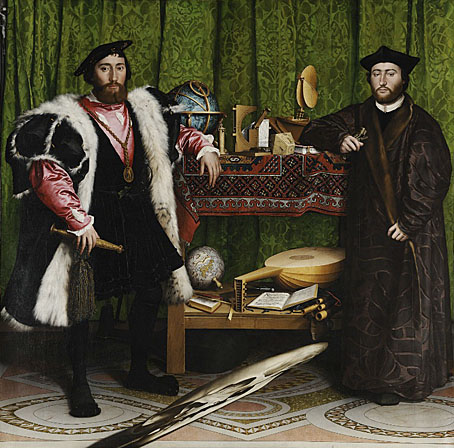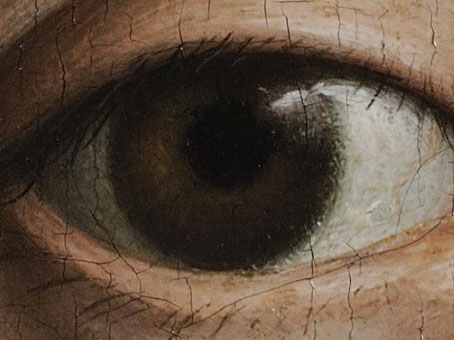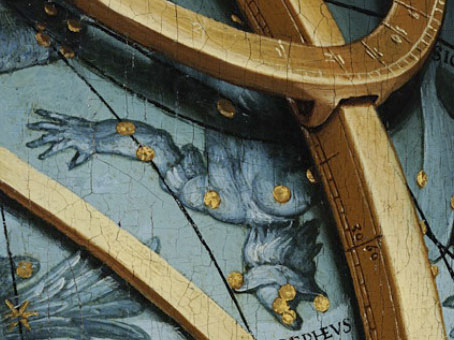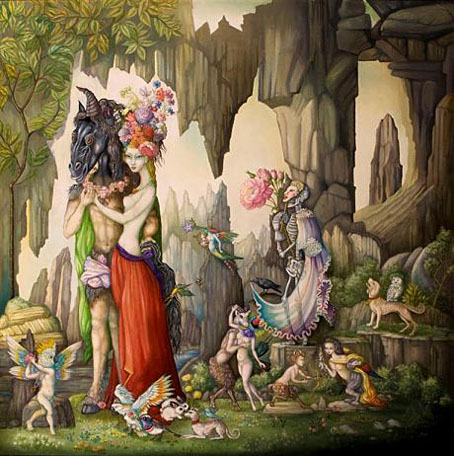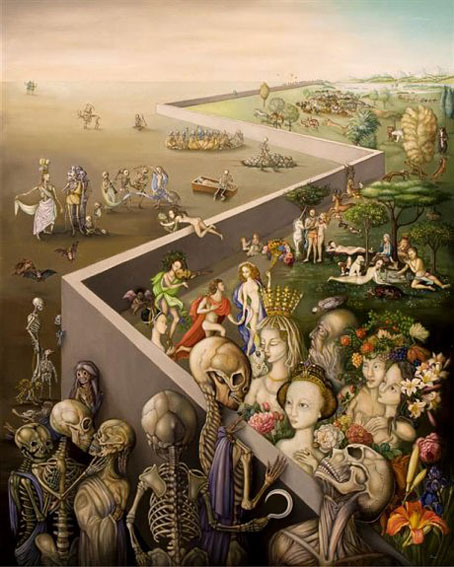Some revelations courtesy of a new venture, the Google Art Project, in which we’re given the opportunity to wander some of the world’s great art galleries and examine a selection of paintings in detail. Holbein’s 1533 masterpiece, The Ambassadors, is the default work for the collection from the National Gallery, London, and it’s a great place to start, being painted in a quite astonishing hyper-realist style. I’ve seen this work in situ and despite its being a large picture it’s difficult to offer it any kind of careful scrutiny. This is partly because the more famous works in that gallery always draw an impatient crowd eager for you to get out of their way, but also because the staff there don’t like people getting too close to the paintings; I was once reprimanded by a staff member for gesticulating too closely to one of the pictures whilst discussing it with a friend.
The Ambassadors is celebrated for its anamorphic vanitas skull (gallery visitors usually take turns viewing this from the side of the picture) and its collection of very carefully painted objects and instruments. Thanks to Google we’re now able to examine these to a degree we wouldn’t have been able to do before unless we worked for the gallery. Holbein astonishes even more when you can see how carefully he rendered so many different materials and textures. And this is only one of the works available from one of the galleries…
Of the paintings I’ve looked at so far not all allow such ultra-magnified views but then not all paintings require this. Artists such as Titian and Turner don’t benefit from scrutiny with a magnifying glass. An initial gripe would be the lack of any thumbnail view of the paintings on offer but it seems unfair to complain, this is a great development for art lovers. I’m hoping now that the project will evolve the way Google Earth has, with the addition of other galleries and paintings. A few more details follow.

